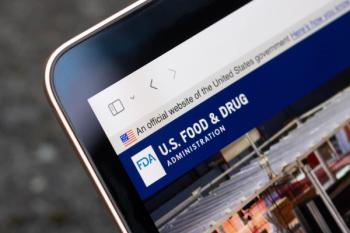
Tip of the Week: Improving Efficiency Benefits Everyone
Although pharmacists may be busy during seemingly every moment of the day, it is important to realize that there are opportunities where time can be saved.
Effective time management is a challenge for most people, but it may be particularly difficult for community pharmacists. Pharmacists in the community setting have the added pressure of ensuring patient safety while multitasking between prescription verification, managing staff members, and patient consultations. Burnout, increased workload, and enhanced responsibilities despite the lack of time and resources are issues that face many pharmacists.
Although pharmacists may be busy during seemingly every moment of the day, it is important to realize that there are opportunities where time can be saved. Efficiently utilizing the hours in the workday and recognizing downtime can be huge assets in promoting productivity and enhancing pharmacy workplace performance. Reflecting on the essential tasks that need to be performed and optimizing the efficiency of nonessential duties are keys to identifying areas that can be improved to maximize the potential of the workday.
A recent time-and-motion study of various pharmacy settings examined how pharmacists utilize their time throughout the workday to identify inefficiencies, boost productivity, and decrease wasted time.1 Essential tasks such as consultations, responding to patient questions, and verifying prescriptions accounted for 66% of retail pharmacists’ workday.1 Approximately 15% of the workday included nonessential functions such as calling insurance companies, following up with physicians, and working at the prescription pick-up window. All of these are tasks that could have been delegated to other pharmacy staff, thereby freeing up the pharmacist to focus on higher-value responsibilities.1
These findings are relevant because they highlight the opportunity for pharmacists to focus their efforts on medication outcomes and patient-centered care rather than on responsibilities that can be assigned to others. Pharmacists’ primary role is as medicine experts who are responsible for preventing medication errors and protecting patients’ safety. Pharmacists in the aforementioned study spent just 31% of their time verifying prescriptions and medication orders.1
Optimizing time spent on essential tasks and delegating nonessential duties enables the pharmacist to focus on patient-centered care and enhances the productivity of other pharmacy staff members. Pharmacy managers should prioritize duties while concurrently encouraging employees’ self-efficacy to take initiative and minimize inefficient downtime (notwithstanding some purposeful downtime to rest and recharge). Managers cannot and should not supervise every task of each employee all day.
Therefore, managers must effectively communicate the overall intention or desired end result of business goals while allowing employees the flexibility to efficiently utilize resources to arrive at the end goal.2 Operational goals should be formulated with feedback from employees, customers, and management, and the list should be clear, concise, and should align with the overarching vision of the business.2 Clearly identifying roles, defining responsibilities, and setting expectations for employees prompts smoother workflow operations.
Additionally, expanding positions of other pharmacy staff members by incorporating workflow redesign such as tech-check-tech can help pharmacy evolve by gaining efficiencies without compromising patient safety.1 Role-modeling effective time management behaviors can assist other staff members and can also carry through into our daily lives even outside the workplace. Effective time management also limits stress and enhances wellbeing. There are a number of resources for pharmacists seeking effective time management strategies in general, in addition to specific literature that relates to pharmacy operations. Time management is an essential skill for the pharmacist and should be honed, as multiple stakeholders including patients, employees and managers stand to benefit from decreasing wasted time and focusing efforts on high-value essential functions.
More information on Managing Yourself for Success and Managing Operations can be found in Pharmacy Management: Essentials for All Practice Settings, 5e.
ABOUT THE AUTHORS
Valerie Wasem is a PharmD Candidate at Touro University California.
Shane P. Desselle, PhD, is a professor of social and behavioral pharmacy at Touro University California.
References
- Negaard BJ, Lyons KP, Nichol CL, & Polgreen LA. What does a pharmacist do? A time and motion study. Res Social Admin Pharm. 2020;16(9):1314-1317.
- Alston GL, & Wynn W (2020). Chapter 8: Operations management. Zgarrick DP, Desselle SP, Moczygemba LR, & Alston G (Eds.), Pharmacy Management: Essentials for All Practice Settings, 5e. McGraw Hill.
Newsletter
Stay informed on drug updates, treatment guidelines, and pharmacy practice trends—subscribe to Pharmacy Times for weekly clinical insights.




















































































































































































































